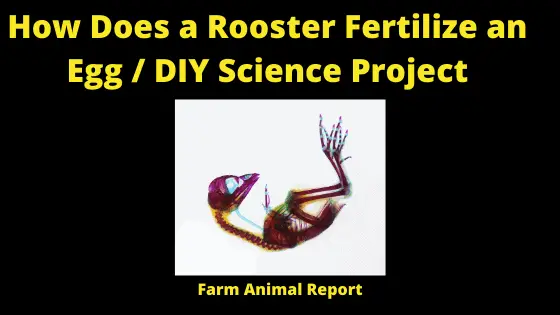How do Roosters Fertilize eggs – As a general rule, The rooster will hop on the hen’s back and perform a cloacal kiss, delivering sperm into the oviduct. This will fertilize the egg of the day and can fertilize eggs for a week or so afterward. It is called “cloacal kissing” because it involves both birds touching their cloacas together in order to transfer sperm from one bird to another.
How Do Roosters Fertilize Eggs | Chickens
The completed mating in chickens is the culmination of a sequence of behaviors. The rooster will initiate mating by exhibiting courtship behavior: dropping one wing and dancing in a circle (the lowered wing will be on the inside of the circle dance). How Do Roosters Fertilize Eggs
The hen will crouch (dip her head and body) to indicate receptiveness to the male. The rooster will then mount the hen and grab her comb, neck feathers, or the skin on the back of her head or neck to help hold onto the hen’s back. How Do Roosters Fertilize an Egg
Check Out Amazon for Educational Resources for Breeding Chickens
how does a rooster fertilize an egg – The next behavior is the tread (the rooster walks quickly in place on the hen’s back) and finally the completed mating of the behavioral sequence. The completed mating occurs when the rooster dips his tail to the side of the hen’s tail and spreads his tail feathers so that their cloacae come into contact.
12 Ways to Make Money by Chicken Farming—Extensive Guidelines for Chicken Farmers
At this point, the rooster’s sperm is released directly into the hen’s reproductive organ via her cloaca. In the typical breeder house with thousands of birds, the entire sequence of behaviors does not always occur, and the courtship dance is frequently left out of the sequence.
Chickens are polygynous but certain males and females selectively mate regularly.
How Do Roosters Fertilize Eggs
Roosters don’t actually fertilize eggs; the hen does that all on her own. However, the rooster plays an important role in the process. He produces sperm, which is stored in his cloaca (back end). When the hen is ready to lay an egg, she will lower her cloaca to meet the rooster’s.
He then transfers his sperm into her reproductive tract. The sperm travel up the oviduct and fertilize the egg as it’s being laid. The whole process takes just a few seconds, but it’s essential for baby chicks to be born.
What does Chicken Courtship Look Like
The first thing you need to know about chicken courtship is that the male needs to impress the female. He will start by strutting around her, making himself look as big and strong as possible. He might also make loud noises or try to show off his feathers.
If the female is interested, she will respond by moving closer to him and perhaps even flapping her wings. The two will then move closer together until they are touching, at which point they will start preening each other. This preening is an important part of the bonding process, and it usually lasts for several minutes.
Once the chickens have bonded, they will usually start mating. However, this is not always the case; sometimes the male will continue to court the female even after they have mated. In general, though, you can expect to see some pretty intense courtship behavior before chickens mate.
What is Chicken Egg Fertilization Timeline
Chicken egg fertilization is a process that occurs inside the chicken’s body. After the rooster mates with the hen, the hen stores the sperm in her oviducts. The sperm can remain viable for up to 48 hours, but fertilization usually occurs within 12 hours after mating.
Once fertilization occurs, the egg travels down the oviduct and is laid about 24 hours later. The egg then incubates for 21 days before it hatches. During this time, the embryo develops and grows inside the egg. At around day 18, the chick begins to pip, or peck, its way out of the eggshell.
The hatching process usually takes about three days to complete. After hatching, the chick is called a chickling. Chicklings are not yet able to fly or mate. They will reach sexual maturity at around six months of age.
How do Farmers Identify Fertilized and Unfertilized Eggs
How do Roosters Fertilize eggs – In order to ensure that their chickens are producing healthy eggs, farmers need to be able to identify which eggs are fertilized and which are not. There are a few different methods that farmers can use to make this determination. One common method is to hold the egg up to a light source. Unfertilized eggs will appear clear, while fertilized eggs will have a small dark spot on them. Another method is to place the egg in a pan of warm water. Unfertilized eggs will float, while fertilized eggs will sink. By using these simple techniques, farmers can easily tell which of their chicken’s eggs are fertilized and which are not.
Some females in the flock will show avoidance to specific males, and therefore are rarely mated by those males.
- rooster fertilize eggs
- hens lay eggs
- chicken eggs fertilized
- fertile chicken egg
- hen
- pet chickens
- Roosters by mating with a hen and placing his sperm into her cloaca
- A rooster can store sperm in her body
- hen eggs will Be Laid
The rooster usually plants his seed between 100 million and five billion sperm at a time with greater concentrations produced at the beginning than at the end of the day, when depletion occurs after many mating.
The first planting averages about 1 ml but after several times, the average volume will be reduced to 0.5 ml or less. These data were obtained from semen collection as done in artificial insemination.
The numbers of sperm per time and the volumes of seed should be lower in natural mating than collection by artificial stimulation and abdominal massage.
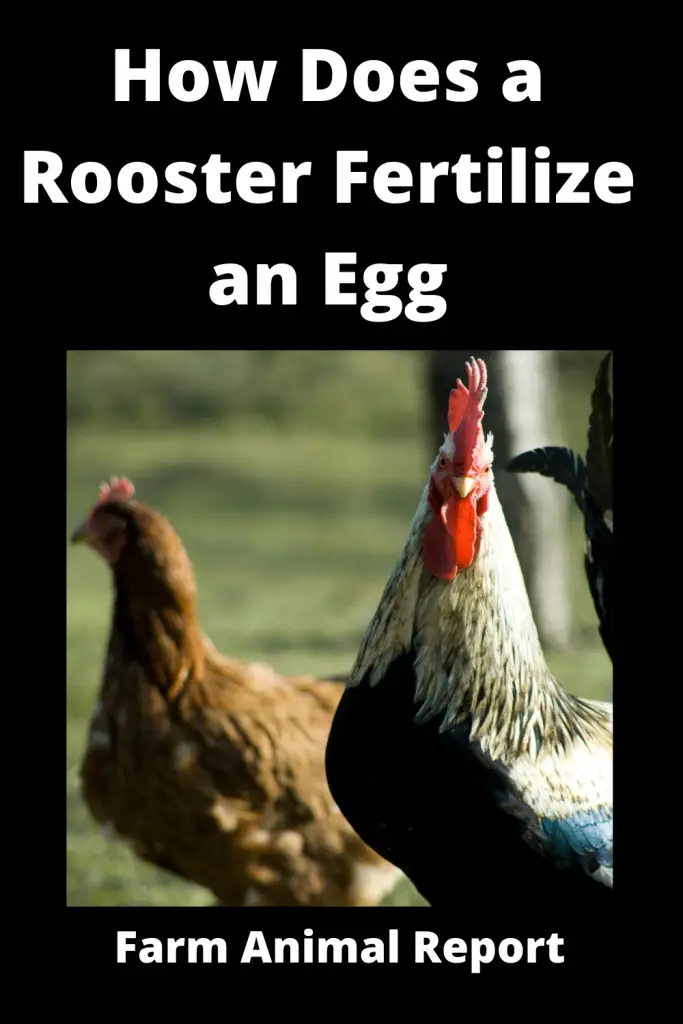
The frequency of mating follows a diurnal pattern with mating frequency reaching peaks early and late in the day.
Roosters Can Mate 10 – 30 Times a Day | Chickens | Chicken Eggs Fertilized
A rooster may mate from 10 to 30 or more times per day, depending on the availability of hens and competition from other roosters.
However, the number of seeds per event is seldom less than 100 million which is the minimum required to maintain high fertility. With natural mating, better fertility will result when mating occurs after the hen has laid a hard-shell egg. (fertilized eggs)
However, if the hens are mated frequently (daily), there is unlikely to be a noticeable difference in fertility regardless of when the mating occurs.
The rooster has a small phallus that becomes engorged with lymph to form a copulatory organ. The copulatory organ is rudimentary and at the time of mating, there is practically no penetration.
The hen everts her organ during copulation, which helps to transfer the seed into the oviduct.
Ducks, geese, and some other birds have more well-defined copulatory organs.
An understanding of the natural mating behavior in chickens can help the breeder manager and producer to observe the mating behavior sequences in their flocks to assess whether their flock fertility should be good, average, or poor. Since mating behavior generally follows a diurnal pattern, the best times to observe the flock for mating behavior are early in the morning and late in the afternoon.
In a broiler breeder house, pay attention to the frequency of females coming off the slats so that they can be mated. When a large percentage of females is reluctant to enter the litter area, it is a sign that the males may be overly aggressive and fertility will suffer.
A good practice would be to walk the outside perimeter of the slats in the time before and shortly after egg production begins. This forces the hens to move toward nests and to become accustomed to the litter area.
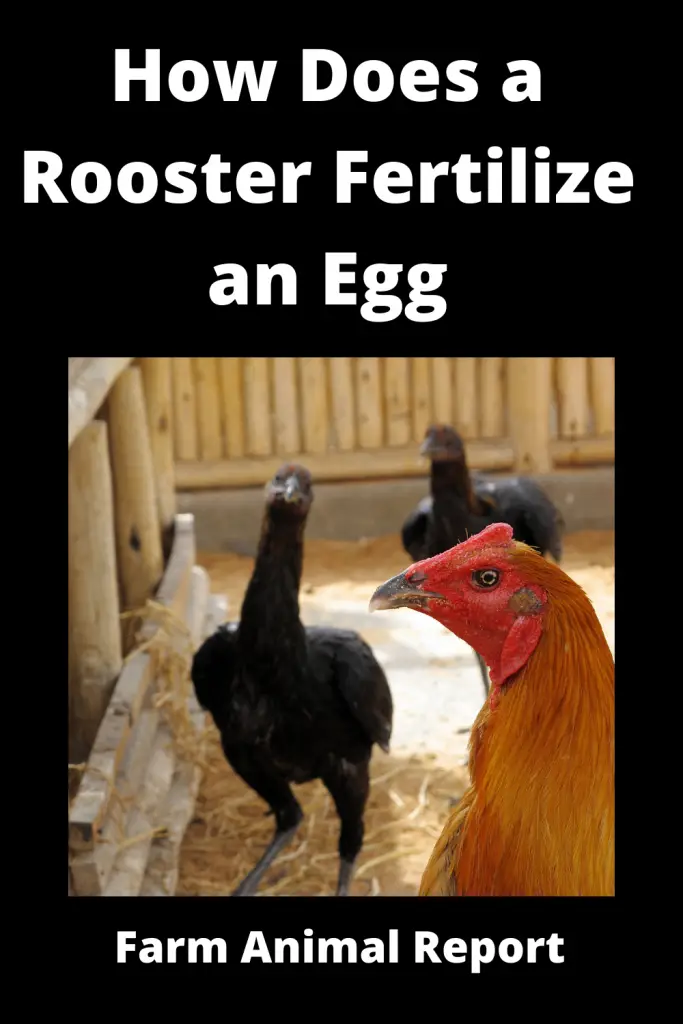
Fertilization and Early Development (fertilized eggs) | Chickens Eggs Fertilized
Fertilization of the germinal disc by the seed takes place in the infundibulum about 15 minutes after its holding follicle has released the yolk.
Cell division to create the new embryo starts about five hours after fertilization and continues while the egg passes along the oviduct and after the egg is laid.
It is generally said that the hen’s egg takes 21 days of favorable incubation conditions for the chicken to develop and hatch. However, this development takes 22 days – one day in the oviduct and 21 days in the incubator or nest.
The zygote
When the male cell (with half the required chromosomes) fertilizes the female egg cell (with the other half of the required chromosomes) it forms the zygote, which is a single cell with the correct number of chromosomes.
About five hours after fertilization the zygote enters the isthmus and it is here that the new embryo starts to develop by simple cell division. By the time the egg leaves the isthmus, the zygote, now called the blastoderm or embryo, comprises eight cells and after four hours in the uterus, it has grown to 256.
How do Roosters Fertilize eggs | Formation of Ectoderm, Endoderm and Mesoderm
Initially, the dividing cells form one layer over the yolk, but as cell division continues two layers are formed. These are called the ectoderm (uppermost) and the endoderm (underneath) layers.
At about this stage the central cells of the blastoderm separate from their contact with the yolk to form a cavity. It is in this cavity that subsequent embryo development occurs.
Soon after the formation of the ectoderm and endoderm, the third layer of cells called the mesoderm, or middle layer, is formed.
From this stage on, the organs and tissues of the bird will develop from these three layers of cells.
- The ectoderm produces the nervous system, parts of the eyes, the feathers, beak, claws, and skin.
- The endoderm produces the respiratory system, the digestive system, and secretory organs.
- The mesoderm produces the skeleton, muscles, circulatory system, reproductive organs, and excretory system.
Another important development at this stage is the way the cells change to allow the production of the different types of cells that make up the tissues. By the time the egg is laid the embryo consists of many cells differentiating into the various tissues, organs, and body systems.
Physiological zero | Lay unfertilized Eggs | Hen
The fowl retains some vestiges of the characteristics of its reptilian ancestors. One characteristic, in particular, is the influence of ambient temperature during the post-laying period on embryonic development.
When the temperature of the egg is below 20°C, the embryo becomes dormant and most development stops. When the temperature rises above 20°C, embryonic activity re-initiates. This temperature of about 20°C when the embryonic activity starts or stops is often referred to as a physiological zero.
Fluctuating temperatures above/below 68°F will create a start/stop response in embryonic development, and each succeeding response progressively weakens the embryo. The temperature must be increased to the required 37-38°C for optimum development to occur.
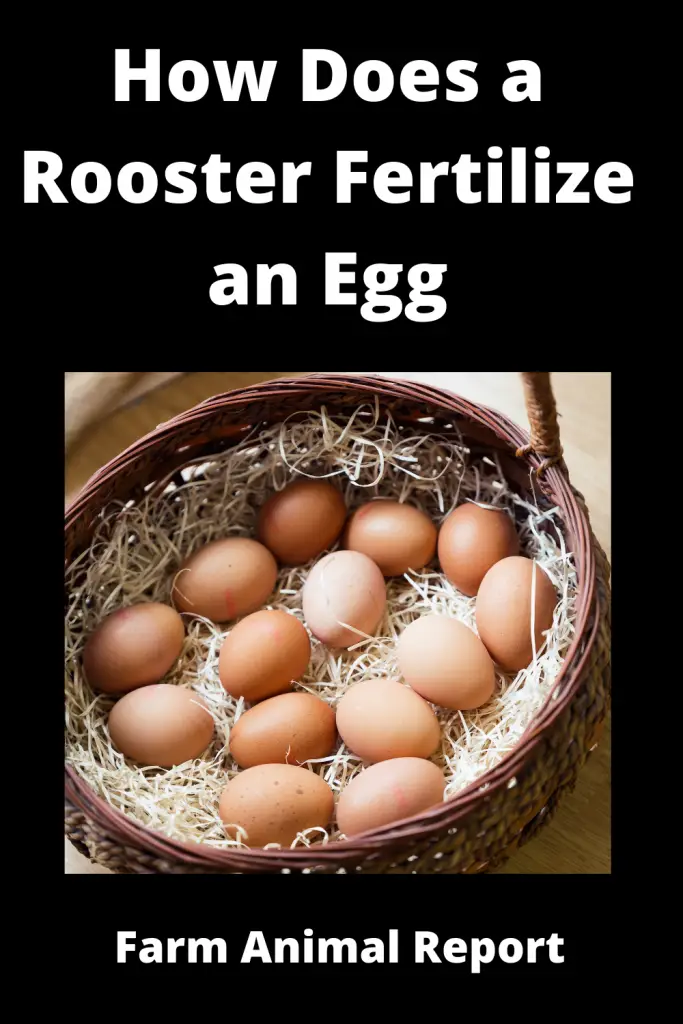
Failure to satisfy this need leads to significantly weaker embryos. To retain maximum viability of the embryo, hatching eggs should be processed and placed in cool storage below 68°F as soon as possible after collection and held at that temperature until the pre-warming process just prior to setting the eggs in the incubator.
Once in the incubator, the temperature must be controlled within very close parameters.
Extra-embryonic Membranes – Eggs – a fertilized egg
Because the avian embryo has no anatomical connection to the hen, all of its nutritive requirements, except oxygen, must be contained within the egg. From very early on, the embryo develops special membranes external to its body to access the nutrients in the egg and to carry out essential bodily functions.
There are four of these special membranes and their names and functions are as follows:
Yolk sac: This sac envelops the yolk and produces an enzyme that changes the yolk material into a form that can be used as a food source by the developing embryo.
Any remaining, unused yolk material in the yolk sac when the chicken hatches from the egg are drawn into the abdomen for use by the chicken for the first two to three days after hatching while the chicken learns what to eat/drink and where to find it.
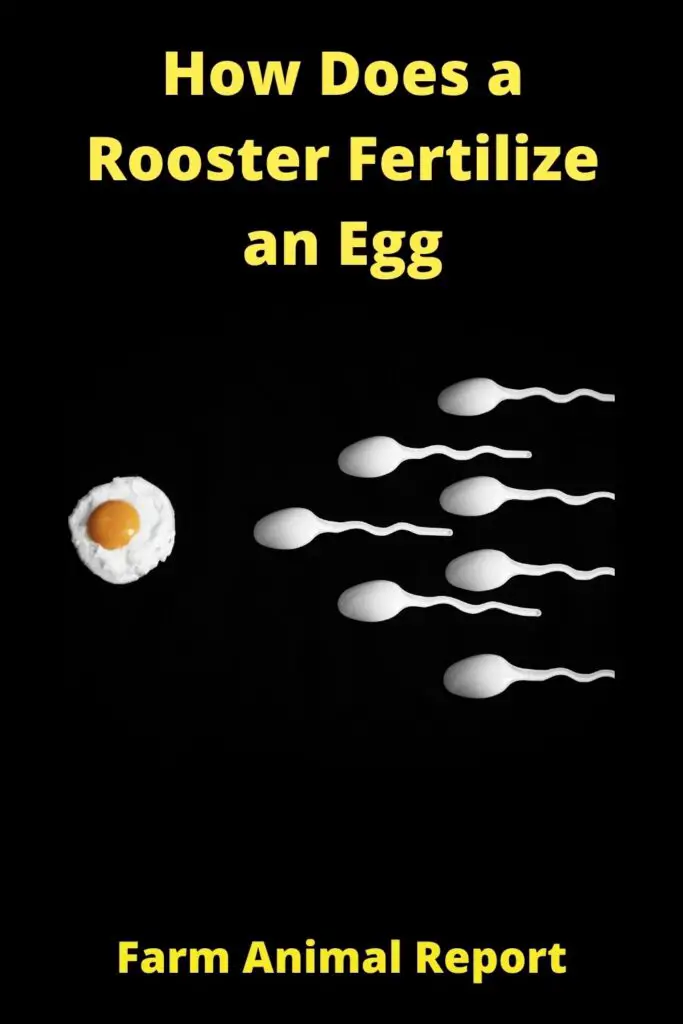
Amnion: The amnion forms a sac that is filled with fluid in which the embryo floats. In this way, it provides a shock-absorbing environment in which the fragile embryo can develop without harm from normal day-to-day knocks.
Allantois: The allantois develops an extensive circulatory system connected to that of the embryo and is driven by the new embryonic heart. When the allantois is fully developed it completely surrounds the embryo. This membrane has a number of functions:
- Respiratory – the developing embryo uses oxygen and produces carbon dioxide (it respires). It is unable to carry out this function for itself and hence the allantois oxygenates the blood and eliminates carbon dioxide.
- Excretory – it removes the wastes that result from the embryo’s metabolism and deposits it in the allantoic cavity.
- Digestive – it provides the means for the embryo to access the albumen and the calcium of the shell.
Chorion: The chorion fuses the inner shell membrane to the allantois and helps that membrane to carry out its functions.
How do Roosters Fertilize eggs | Daily Embryonic Development – Chicken Egg Fertilization Timeline
To better carry out an investigation into poor hatchability it is necessary to have knowledge of the way the embryo develops from day to day. This allows the hatchery manager to determine at what age/stage embryos may have died. This is important information when attempting to identify the cause of any poor results.
Photographs of the following steps may be viewed by Clicking Here.
DAY 1: Appearance of embryonic tissue.
DAY 2: Tissue development is very visible. The appearance of blood vessels.
DAY 3: Heartbeats. Blood vessels are very visible.
DAY 4: Eye pigmented.
DAY 5: Appearance of elbows and knees.
DAY 6: Appearance of the beak. Voluntary movements begin.
DAY 7: Comb growth begins. Egg tooth begins to appear.
DAY 8: Feather tracts were seen. Upper and lower beak equal in length.
DAY 9: Embryo starts to look bird-like. Mouth opening occurs.
DAY 10: Egg tooth prominent. Toenails visible.
DAY 11: Cob serrated. Tail feathers are apparent.
DAY 12: Toes fully formed. First few visible feathers.
DAY 13: Appearance of scales. Body covered lightly with feathers.
DAY 14: Embryo turns head towards the large end of the egg.
DAY 15: The gut is drawn into the abdominal cavity.
DAY 16: Feathers cover the complete body. Albumen is nearly gone.
DAY 17: Amniotic fluid decreases. The Head is between the legs.
DAY 18: Growth of embryo nearly complete. The yolk sac remains outside of the embryo. The Head is under the right wing.
DAY 19: Yolk sac draws into the body cavity. Amniotic fluid is gone. The embryo occupies most of the space within the egg (not in the air cell).
DAY 20: Yolk sac is drawn completely into the body. The embryo becomes a chick (breathing air with its lungs). Internal and external pipping occurs.
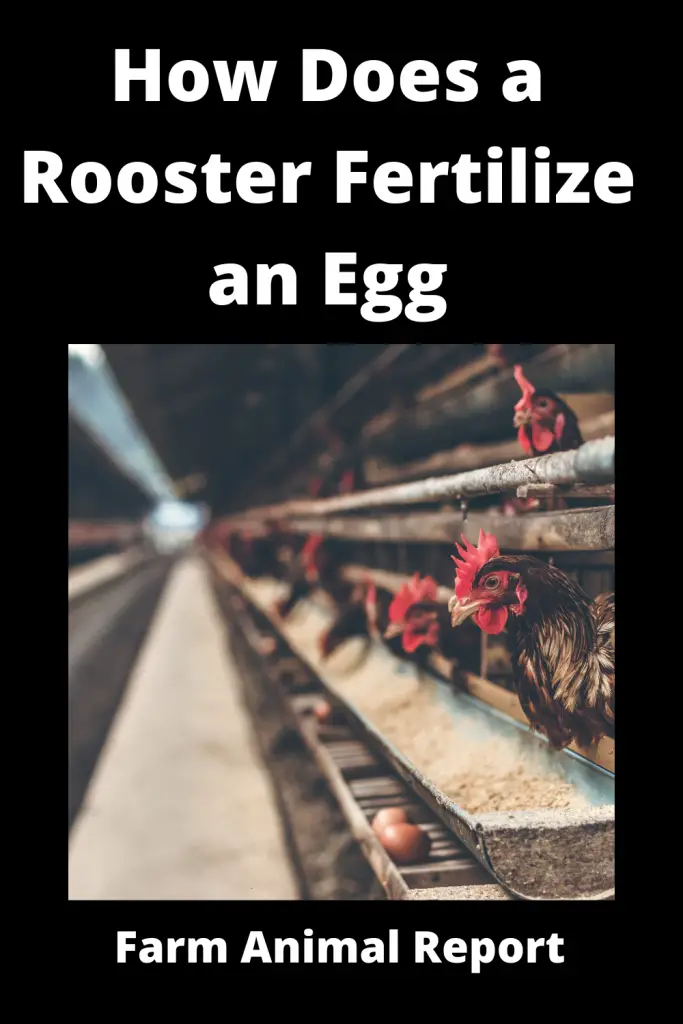
Embryonic Communication
With natural incubation, the chicks hatch over a relatively short period of time. This is despite the eggs being laid in the nest over a period of several days and the hen sitting on different eggs for different periods of time.
Synchronized Hatching
This indicates that there is some system to synchronize the hatching process. It is now known that the different embryos communicate with each other by a series of clicking sounds, the rate of clicking being the important feature.
Ensuring the eggs on the hatching trays are in contact with each other facilitates the synchronization of hatching where the eggs are incubated in a modern machine. This helps to reduce the time between when the first and last chicks hatch.
DIY Science Project Watch a Chick Develop
Rooster Care and Feeding
Before you add a male bird to your backyard flock, weigh the pros and cons, and be prepared to manage him differently than your hens.
Are Roosters Aggressive?
A rooster’s instinct is to protect the flock and help ensure hens are well taken care of. Many take this job very seriously. Unfortunately, the rooster’s methodologies are not always friendly.
He may view you, your children, or other pets as a threat to the flock and act hostilely to protect the hens. Behavioral training can help, but sometimes you just need to find a mellow rooster.
At night, it may help to keep roosters in a separate coop away from the hens. Crowing and aggression can sometimes be reduced this way.
How do Farmers Know if a Chicken Egg is Fertilized?
There are several ways to tell if the egg is fertilized. The first step in determining an egg’s fertility level on a chicken farm is to look at the shape of its yolk.
A fertilized egg will have a noticeable dark spot or small ring on one side of it, which indicates that there was recently sperm involved with the hen. It can be difficult to see this mark on a small egg. However, the size of the spot is not important; it’s whether or not one exists at all that means something.
The second way farmers determine if an egg has been fertilized is by looking at its air sack and albumen (egg white). When an egg is laid, the yolk and egg white are still one large mass. As an embryo begins forming in a fertilized egg, it breaks up that larger mass into two distinct components: the air sack and albumen on one side of the egg and the yolk on the other.
The third way to tell if your chicken is laying fertilized eggs is to look at its color. If you are seeing eggs with multiple colors, it’s a fair bet that they’re fertilized.
The more distinct the air sack and albumen appear in comparison to the yolk, generally speaking on an individual egg basis, the more likely it was fertilized since both of those components would have taken longer for the chicken to develop than the yolk alone.
How Many Eggs does a Rooster Fertilize at One Time?
A rooster can fertilize multiple hens’ eggs at one time. A hen will lay an egg every day or two, and a rooster must release his sperm to fertilize it within minutes of ovulation in order for the embryo to attach to the uterine wall successfully.
The more often you keep your chickens laying eggs, the more you need to ensure that your rooster is fertilizing eggs properly. The number of eggs a rooster can inseminate depends on the fertility rate, which varies based on breed and age.
While a young rooster may fertilize as many as 30 hens’ eggs per day, an older rooster may only be able to inseminate 20.
Are There Rooster Breed Differences?
In general, some breeds have a reputation for producing more docile roosters than others. These include the Langshan, Silkies, Brahma, and Cochin. Leghorns, Barred Rocks, Rhode, and Island Reds are typically more active.
Roosters raised from the time they hatch are sometimes more docile. Aggressive behaviors are also lessened when hens are not present; however, there are no guarantees on how a bird will behave with maturity.
So Why Keep a Rooster?
Roosters are good protectors and can earn their keep when you have a large area in which your hens free-range. Roosters will also seek out and alert hens of the best food find and tasty treats.
If you wish to breed your hens and hatch baby chicks from your flock, a rooster is required to fertilize the eggs. Aesthetically, roosters are quite stunning, with their long, colorful feathers and stately presence. A rooster need not be present for hens to lay eggs, but you will need a rooster if breeding for live chicks is a goal.
How Many Roosters?
To prevent fighting, consider owning just one rooster. Keeping multiple roosters is usually not recommended unless you have a large flock of hens or no hens at all. One rooster per 10 hens is a rule of thumb.
This will help prevent over-breeding. If you have a rooster and fewer than 10 hens, consider housing the rooster separately. Always have a game plan for how to deal with a rooster that does not fit in with your flock or family. Re-homing an aggressive rooster can be challenging, so have a plan before you get the rooster.
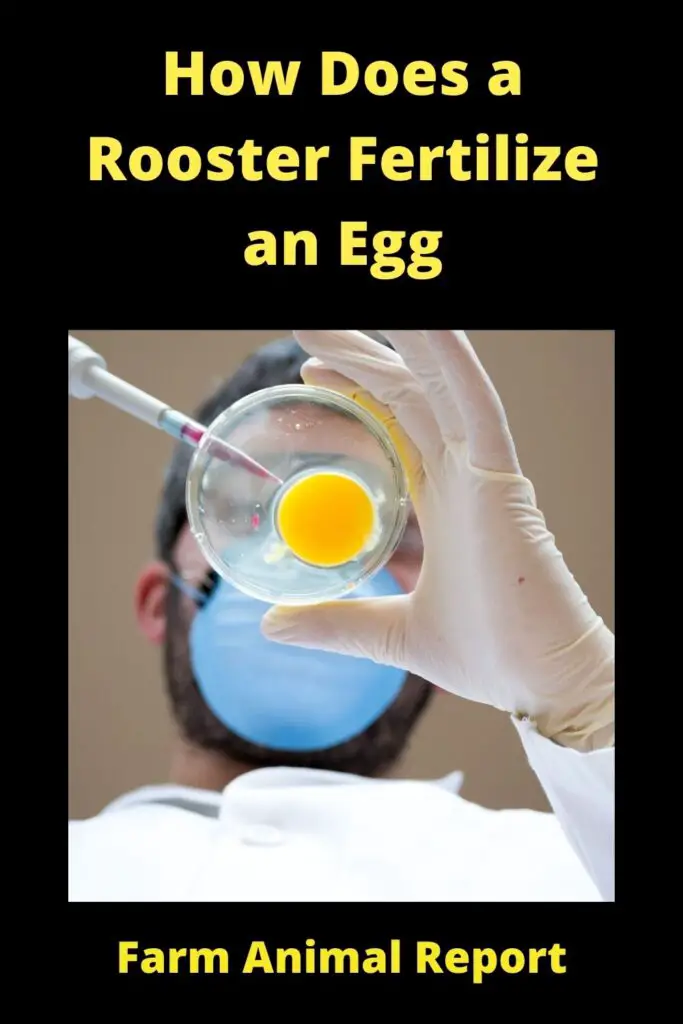
How do Roosters Fertilize Eggs? (fertilizing eggs)
For how do roosters fertilize eggs, we must first understand how human fertilization occurs. The way humans reproduce is fairly similar to how most other mammals and bird species reproduce: the male’s sperm carries DNA down into an egg which then carries it along until it finds a spot in the nuclei to implant itself. This process is called fertilization. However, how roosters fertilize eggs is a bit different than how humans reproduce.
Roosters do not produce sperm like other male animals; instead, they carry little sacks of the enzymes which break down the egg and allow it to be fertilized by the sperm that has been deposited into the hen’s cloaca (an all-purpose orifice used for both of excretion and reproduction) by a rooster.
These enzymes dissolve the shell of the egg and allow the sperm to burrow its way into the egg and fertilize it. This is how roosters fertilize eggs.
The sperm travels from the cloaca of a rooster all the way to where it can fertilize an egg in one of a few different ways: by traveling through the reproductive tract and coming out of the hen’s vent, by being released onto a hard surface and making its way via muscular contractions to the egg, or by being inserted directly into the egg via an opening in the hen’s reproductive tract.
The fertilized egg will then continue on its way down the reproductive tract and become surrounded by albumen (egg white) and a membrane where it will wait until it is ready to be laid. It takes about twenty-four hours for the egg to be laid after it has been fertilized. (chicken eggs)
Have you ever wondered how roosters fertilize eggs? The process is actually quite fascinating and begins with a courtship ritual that has been taking place for centuries. While chickens are monogamous, they do not mate for life. The courtship and mating process is repeated several times before the female lays eggs that have been fertilized. This article will explore the chicken courtship process, the timeline for fertilization, and how to tell which rooster has fertilized an egg.
Chicken Courtship 101
Before a rooster and hen can begin the process of fertilization, they must first become acquainted with each other. The rooster will often show off his plumage by strutting around the female and displaying his feathers to the best of his ability. He will also make loud vocalizations to attract her attention.
Once the hen has been impressed, the rooster will then move in closer and perform a series of courtship behaviors such as head bobbing and wing flapping. If the female is interested, she will then move closer to the rooster and they will begin the mating process.
Chicken Egg Fertilization Timeline
Once the rooster and hen have begun mating, the fertilization process can begin. Here is a timeline of what happens during the fertilization process.
Step 1: Courtship
The rooster and hen must first become acquainted with each other before they can begin the fertilization process. During courtship, the rooster will display his plumage and make loud vocalizations to attract the hen’s attention.
Step 2: Mating
Once the hen has been impressed, the rooster will move in closer and perform a series of courtship behaviors. If the female is interested, she will then move closer to the rooster and they will begin the mating process.
Step 3: Sperm Storage
During mating, the rooster will transfer sperm to the hen’s oviduct. The sperm will then be stored in the hen’s oviduct until it is ready to be used for fertilization.
Step 4: Sperm Release
When the hen is ready to lay eggs, the stored sperm is released from the oviduct and flows down to the infundibulum where it is combined with the egg.
Step 5: Egg Fertilization
Once the sperm and egg are combined, the egg is then fertilized and the embryo begins to develop.
Step 6: Egg Laying
The hen will then lay the fertilized egg and the process is complete.
How To Tell Which Rooster Has Fertilized An Egg?
The process of fertilization is a complex one that involves many different steps. Unfortunately, there is no way to determine which rooster fertilized an egg as the sperm is stored in the hen’s oviduct until it is ready to be used for fertilization. Unless the Farmer is keeping only one rooster, or separating them can he be Sure
The process of fertilization in chickens is an interesting one that involves many different steps. From courtship to egg laying, there is a lot that goes on before a rooster and hen can produce a fertilized egg. While it is not possible to determine which rooster has fertilized an egg, it is still a fascinating process that has been taking place for centuries.
Why do Chickens Lay Eggs?
Chickens are able to lay eggs because of a process called oogenesis. This is when the ovary of the chicken produces an egg cell.
The egg cell then goes through a series of changes before it is finally released from the chicken. Once it is released, the egg cell is fertilized by a rooster and then incubated until it hatches into a chick.
The main purpose of chickens laying eggs is to reproduce. However, there are also other benefits that come from chickens laying eggs.
For example, chickens lay eggs so that they can have a food source. The egg provides them with the nutrients that they need in order to survive. Chickens also lay eggs as a way to get rid of excess calcium in their bodies. If they don’t lay eggs, the calcium can build up and cause health problems for the chicken.
Chickens lay eggs for many different reasons. The main reason is for reproduction but there are also other benefits such as providing a food source and getting rid of excess calcium. Chickens are able to lay eggs because of a process called oogenesis where the ovary produces an egg cell.
The egg cell then goes through many changes before it is finally released from the chicken. Once it is released, it can be fertilized by a rooster and then incubated until it hatches into a chick
How to Fertilize Chicken Eggs without a Rooster?
Purchase Fertilized Eggs
One way to ensure that your chicken eggs are fertilized is to purchase them from a farmer who already has a rooster on-site.
This method is not foolproof, as there is always a chance that the hen was not fertile when she laid the egg or that the egg was not properly handled and became damaged.
However, if you purchase your eggs from a reputable source, this is generally a reliable method for getting fertilized chicken eggs.
Use Artificial Insemination
If you have access to a syringe and some sterile gloves, you can artificially inseminate your hens yourself. To do this, you will need to collect semen from a rooster (this can be done by gently massaging the rooster’s vent until he ejaculates into a cup or container).
Once you have collected the semen, put on the gloves and use the syringe to insert the semen into the hen’s vagina. This method is more complicated than purchasing fertilized eggs but can be done if you are determined to incubate your own eggs.
Try an Egg-Laying Supplement
There are commercial products available that claim to help hens lay fertilized eggs without the need for a rooster. These products typically contain hormones that help trigger ovulation in chickens.
While there is no guarantee that these products will work, they may be worth trying if you are set on incubating chicken eggs without a rooster around.
If you want to hatch chicken eggs, you will need to fertilize them first. This usually requires having a rooster on-site to mate with the hens. However, there are ways to fertilize chicken eggs without a rooster.
You can purchase fertilized eggs from a farmer, artificially inseminate your hens yourself, or try an egg-laying supplement. While there is no guarantee that these methods will work, they may be worth trying if you are determined to incubate chicken eggs without a rooster present.
How Long does a Rooster have to be with a Hen before the Eggs are Fertile?
If you’re wondering how long it takes for a rooster to fertilize an egg, you’re not alone. It’s a common question among farmers, and the answer is actually quite simple.
A rooster only has to be with a hen for a brief moment before the eggs are fertile. Here’s a more detailed explanation.
How long does it take for a rooster to fertilize an egg? The answer is almost instantaneous. Once the rooster and hen are together, the rooster will transfer sperm to the hen’s oviduct.
The sperm will then travel through the oviduct and fertilize the egg in the infundibulum—the first section of the oviduct.
It’s important to note that not all of the eggs in a nest will be fertile. In fact, it’s estimated that only about 50-75% of them will be fertilized. However, this is still enough for most farmers since they typically only need a few dozen eggs to get started.
So, there you have it! Now you know that it doesn’t take long for a rooster to fertilize an egg—only a matter of seconds, in fact. This quick process is one of the reasons why chickens are such popular farm animals; they’re relatively easy to care for and their eggs are readily available.
Other Important Tags
- an egg by mating with a hen and placing his sperm into her cloaca
- bantams roosters (small breeds) can successfully mate with large fowl hens
- mated by a rooster can store sperm in her body
- fertilizes an egg by sharing sperm with the hen
- there are enough sperm in her system
- a hen’s eggs cannot be fertilized
- lay unfertilized eggs
- chick essential coop
- roosters lay eggs
- how does a rooster fertilize eggs
- how does rooster fertilize egg
- how to roosters fertilize eggs
- how does the rooster fertilize the egg
- how do rooster fertilize eggs
- how do roosters fertilise eggs
- how roosters fertilize eggs
- how do roosters fertilize chicken eggs
Family Sized Chicken Farm Egg Calculator
| Number of Chickens | Number of Eggs / Day | Number of Eggs / Week | Number of Eggs / Month | Number of Eggs / Year | Family Size | $ Value = .30 / Egg |
|---|---|---|---|---|---|---|
| 1 | .5 | 3.5 | 24 | 168 | 50.40 | |
| 2 | 1 | 7 | 28 | 336 | 1 | 100.80 |
| 3 | 1.5 | 10.5 | 42 | 504 | 151.20 | |
| 4 | 2 | 14 | 56 | 672 | 2 | 201.60 |
| 5 | 2.5 | 17.5 | 70 | 840 | 252.00 | |
| 6 | 3 | 21 | 84 | 1008 | 3 | 302.40 |
| 7 | 3.5 | 24.5 | 98 | 1176 | 352.80 | |
| 8 | 4 | 28 | 112 | 1344 | 4 | 403.20 |
| 9 | 4.5 | 31.5 | 126 | 1512 | 453.60 | |
| 10 | 5 | 35 | 140 | 1680 | 5 | 504.00 |
| 11 | 5.5 | 38.5 | 154 | 1848 | 554.40 | |
| 12 | 6 | 42 | 168 | 2016 | 6 | 604.80 |
| 13 | 6.5 | 45.5 | 182 | 2184 | 655.20 | |
| 14 | 7 | 49 | 196 | 2352 | 8 | 705.60 |
| 15 | 7.5 | 52.5 | 210 | 2520 | 756.00 | |
| 25 | 12.5 | 87.5 | 350 | 4200 | 1260.00 | |
| 50 | 25 | 175 | 700 | 8400 | 2520.00 | |
| 75 | 37.50 | 262.5 | 1050 | 12600 | 3780.00 | |
| 100 | 50 | 350 | 1400 | 16800 | 5040.00 |
Per Day / Per Week / Per Month / Per Year / Dollar Value
Rare Breed Chicken Farming
| Rare Breeds | Country of Origin | Eggs/Week | Average Weight | Price / Chicks |
|---|---|---|---|---|
| Black Penedesenca | Spain | 3-4 | 4-5lbs | $ 13.43 |
| Black Sumatra | Sumatra | 4 / Tinted in Color | 4lbs | $ 4.56 |
| Ameraucana | United States / Chile | 3 / 4 Blue | 5 lbs | $ 4.25 |
| Lavender Orpington | England | 4 / 5 Brown | 5 lbs | $ 6.08 |
| Partridge Chantecler | Canada | 3-5 / Brown | 7 lbs | |
| Wyandotte | United States | 3 - 5 / Tinted Brown | 6 lbs | $ 4.90 |
| Welsummer | Welsum Netherlands | 4 / Dark Brown | 5 lbs | $ 5.95 |
| Silver Grey Dorking | UK / Roman | 8 lbs | $ 5.95 | |
| Light Brahma | United States / China | Brown | 13 lbs | $ 4.90 |
| Silver Laced Cochin / Shanghai | China | 5-6 / Brown | 6 lbs | $ 4.90 |
| White Marans | Marans / France | 4 / Dark Brown | 5 lbs | $ 6.08 |
| Dominiques | United States | 4 - 5 / Brown | 7 lbs | $ 4.90 |
| Exchequer Leghorn | Tuscany Italy | White | 5 lbs | $ 4.25 |
| Silver Spangled Appenzeller Spitzhaubens | Switzerland | 5 | 4 lbs | |
| Buff Brahma Standard | Shanghai China | Brown | 13 lbs | $ 4.90 |
| Silver Laced Polish | Poland / Netherlands | 4-5 lbs | $ 5.95 | |
| White Sultan / Fowls of the Sultan | Turkey | 2 - 3 / White | 4-6 lbs | $ 7.75 |
| Mottled Houdan | Houdan Paris France | White | 4 - 5 lbs | $ 7.75 |
| Dong Tao / Dragon Chicken | Vietnam | 2/3 | $ 2500 - | |
| Ayam Cemani | Indonesia | 3 / Cream | 5 lbs | $ 50 - $ 2500 |
| Onagadori / Honorable Chicken | Japan | $ 49.00 | ||
| Polverara | Italy | 2 / 3 | ||
| Ixworth | Sussex UK | 4 / Cream | ||
| Naked Neck / Transylvanian Naked-Neck chickens. | Transylvania | 5 | $ 4.25 | |
| Campaign | Belgium | 7 / White | 5 lbs | $ 7.75 / Golden |
| Deathlayer / | German | 7 / White | $ 99.00 | |
| Serama / Smallest Chicken in the World | Thailand | .5 - 1 Lb | $ 39.00 | |
| Silkie / Silky | Chinese | 2 / Cream | $ 5.75 / White $ 5.75 / Blue $ 5.75 / Buff $ 5.75 / Black |
|
Types of Chicken Breeds
| Chicken Breeds | Origin | Meat/ Layers / Dual Purpose | Finished Weight | Eggs per Week | Weeks to Slaughter |
|---|---|---|---|---|---|
| Broilers | Canada/US/Europe | Meat | 3.3 lbs | 5 | 14 Weeks |
| Cornish crosses | England | Meat | 6.5 - 8.5 lbs | 3 | 8 - 9 Weeks |
| Jersey Giants | USA | Meat ( Intended to replace Turkeys) | 13 lbs | 4 | 8 - 9 Months |
| Hertigage Breeds | 6 - 9 months | ||||
| Delaware | USA Delaware | Duo | 6.5 lbs | 4 - large | 8 Months |
| Dorking | United Kingdom | Duo | 10 - 14 lbs | 5 - med | 5 Months |
| Buckeye | USA Ohio | Duo | 6 - 9 lbs | 4 - med | 5 Months |
| Rhode Island Red | USA Rhode Island | Duo | 6 b- 8 lbs | 5-6 | 5 Months |
| Leghorn | Italy | Eggs | 4 -5 lbs | 4 | 8 Months |
| Plymouth Rock | USA - Massachusetts | Duo | 7.5 lbs | 4 | 5 Months |
| Sussex | United Kingdom | Duo | 7 lbs | 4 - 5 - large | 5 Months |
| Wyandotte | Canada | Duo | 7 - 9 lbs | 5 Months | |
| Welsummer | Netherlands | Duo | 7 lbs | 4 / Week | 5 Months |
| Hamburg | United Kingdom | Eggs | 7 lb | 4 - med | 9 weeks |
| Black Australorp | Australia | Duo | \3 - 5 lb | 5 - med | 5 months |
| Buff Orpington | England | Duo | 7 - 8 Lbs | 4 - 5 | 8 months |
| Brahma | Meat | 11 lbs | 3 - med | 5 monthss |
Origin
Meat Breeds
Laying Breeds
Dual Purpose Breeds
Chicken / Poultry Breeder Associations
| Rabbit Association | Location | Link |
|---|---|---|
| US Poultry & Egg Association | United States | USPA |
| American Poultry Association | California | APA |
| Ohio Poultry Association | Ohio | OPA |
| National Chicken Council | United States | NCC |
| British Poultry Council | United Kingdom | BPCE |
| Poultry Club of Great Britain | United Kingdom | PCGB |
| Association of Poultry Breeders in EU | Europe | AVEC |
| Australian Chicken Meat Federation Inc | Australia | ACMF |
| Australian Poultry Hub | Australia | Poultry Hub |


